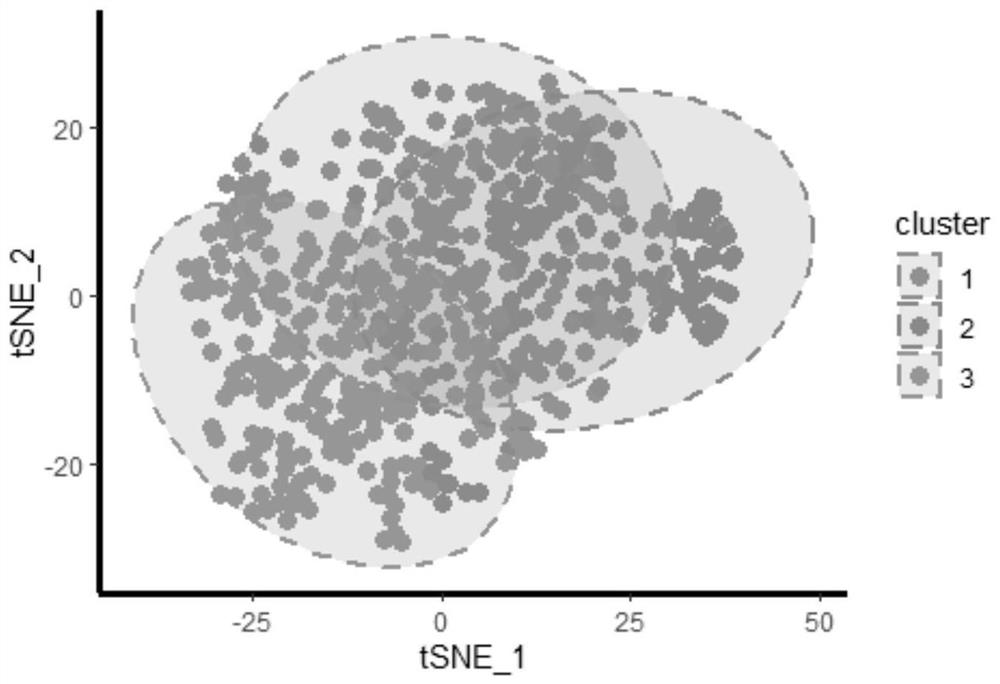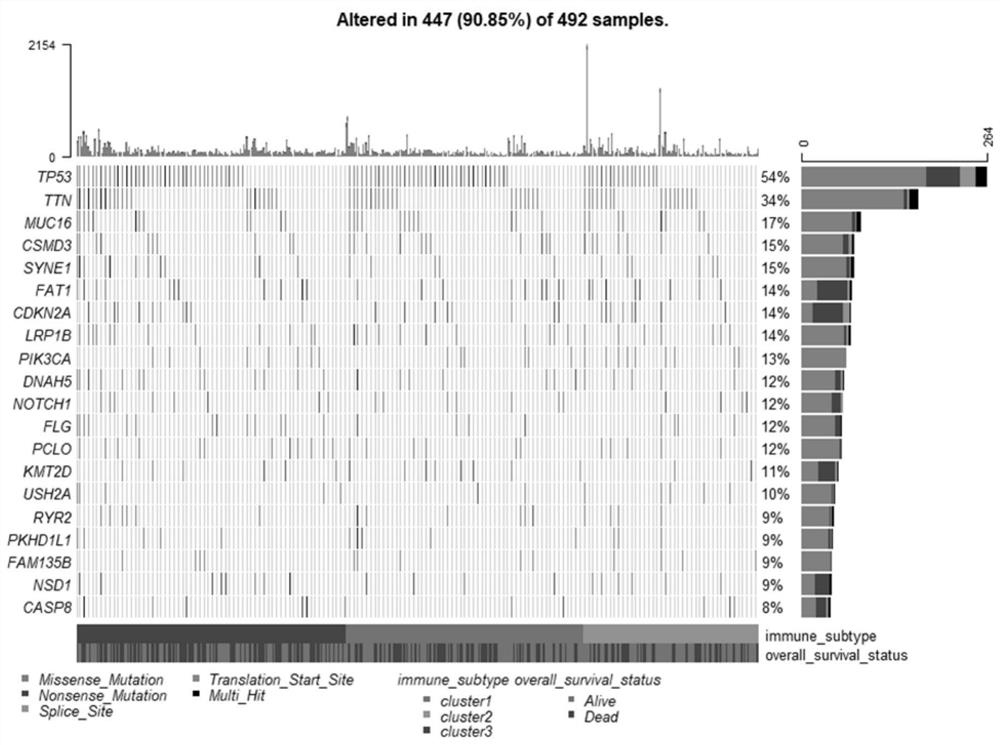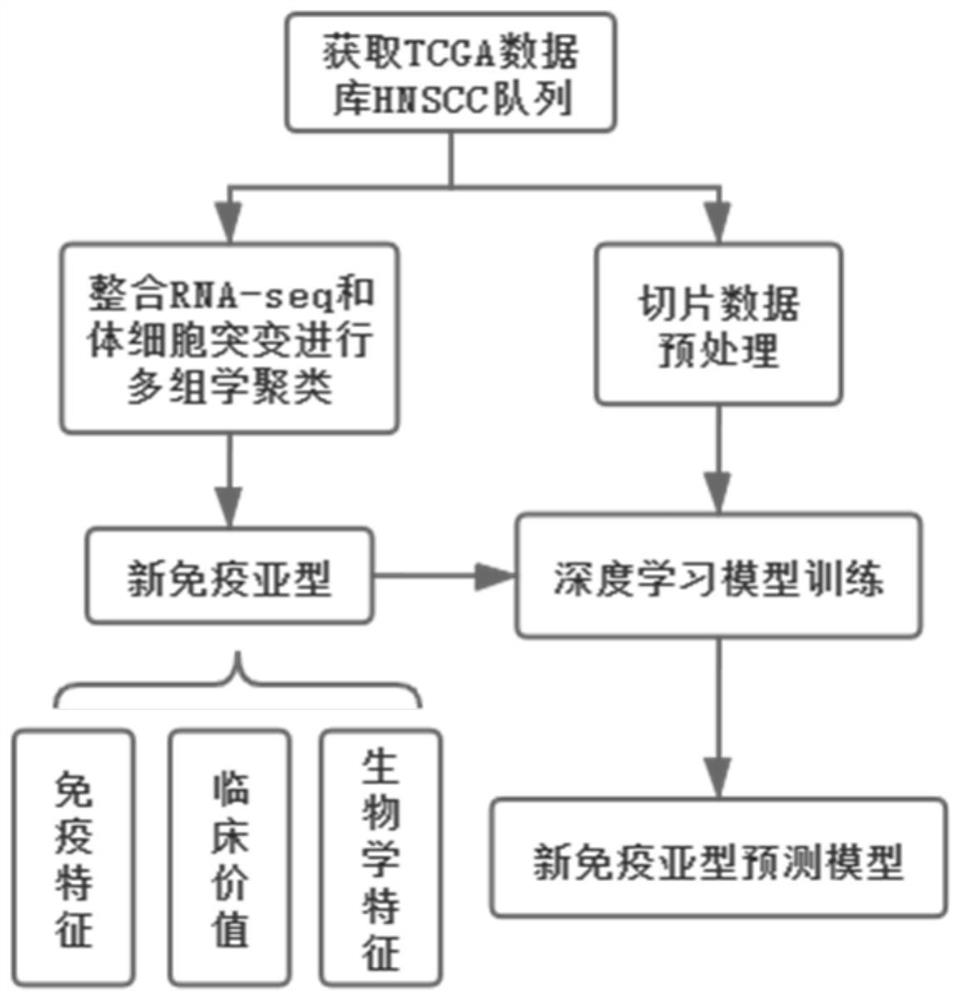Prediction system for predicting head and neck squamous cell carcinoma immune subtype
A technology for squamous cell carcinoma and prediction system, which is applied in the field of prediction system for predicting immune subtypes of head and neck squamous cell carcinomas, and can solve the problems of limiting the application of immune typing and so on.
- Summary
- Abstract
- Description
- Claims
- Application Information
AI Technical Summary
Problems solved by technology
Method used
Image
Examples
Embodiment 1
[0062] Example 1 Establishing the Immune Subtype Classification Method for Head and Neck Squamous Cell Carcinoma
[0063] 1. The division of intermediate type, immune activation type and immune desert type
[0064] The RNA-seq data, somatic mutation data, clinical follow-up data, and pathological image data of HNSCC patients were downloaded from the TCGA database. A total of 499 HNSCC patients were included for analysis, including 132 females and 367 males with an average age of 61.072 years, including 499 cancer samples and 44 paracancerous samples.
[0065] The list of immune-related genes is derived from the research of Charoentong [Cell Rep, 2017.18(1): p.248-262.], representing the immune cell population in tumor tissue. Based on immune-related RNA-seq and mutation data, the iClusterplusR software package was used to perform multi-omics clustering of patients, such as figure 1 As shown, patients with head and neck squamous cell carcinoma were divided into three immune s...
Embodiment 2
[0080] Example 2 Establishment of a prediction system for predicting immune subtypes of head and neck squamous cell carcinoma
[0081] like image 3 As shown, the purpose of this embodiment is to provide a prediction system for head and neck squamous cell carcinoma classification based on the neural network model by using the pathological slice data of HNSCC. Among them, the three subtypes of typing are intermediate type, immune activation type and immune desert type as described in Example 1.
[0082] First get the data and divide the data into training set, validation set and test set:
[0083] ① Acquire the TCGA database (https: / / www.cancer.gov / about-nci / organization / ccg / research / structural-genomics / tcga), and separate the data sets of three immune subtypes according to the method in Example 1.
[0084] ②Balance the data set, cut and preprocess the original data, and convert it into an atlas of single tiles for training. specifically:
[0085] A total of 493 slices were...
PUM
 Login to View More
Login to View More Abstract
Description
Claims
Application Information
 Login to View More
Login to View More - R&D Engineer
- R&D Manager
- IP Professional
- Industry Leading Data Capabilities
- Powerful AI technology
- Patent DNA Extraction
Browse by: Latest US Patents, China's latest patents, Technical Efficacy Thesaurus, Application Domain, Technology Topic, Popular Technical Reports.
© 2024 PatSnap. All rights reserved.Legal|Privacy policy|Modern Slavery Act Transparency Statement|Sitemap|About US| Contact US: help@patsnap.com










